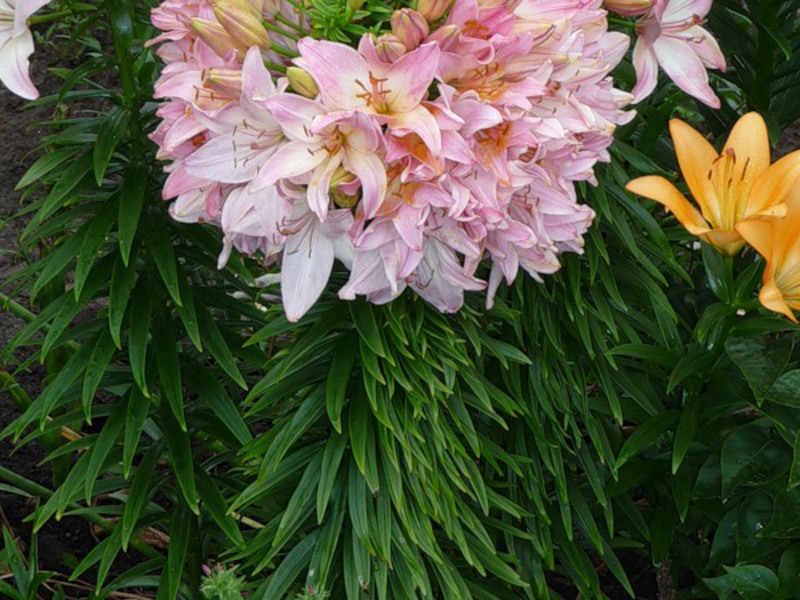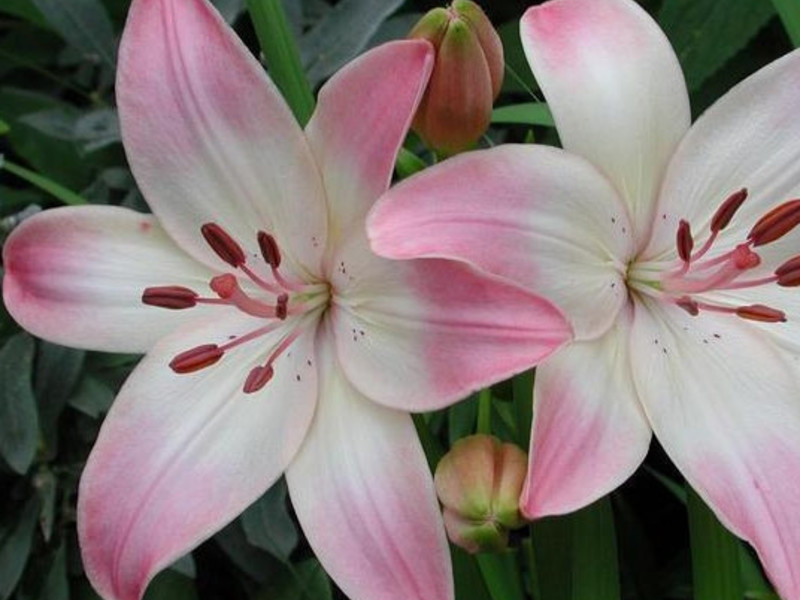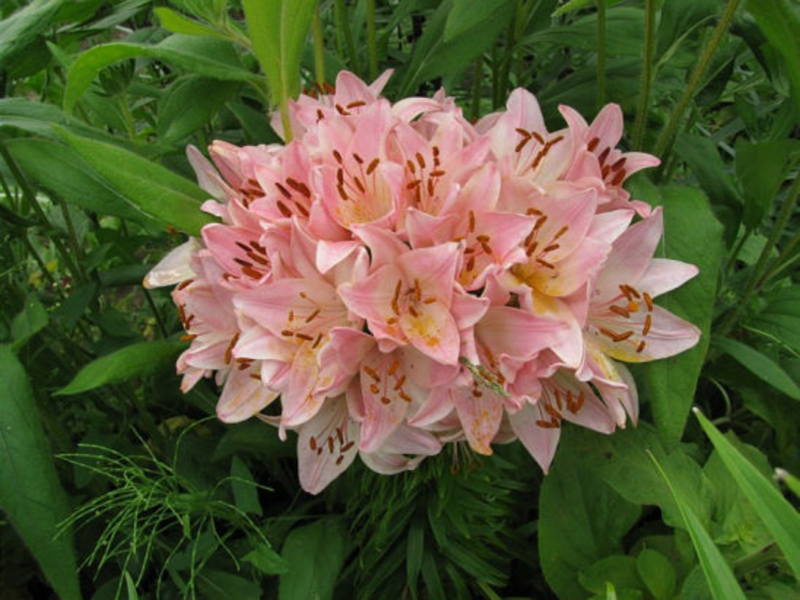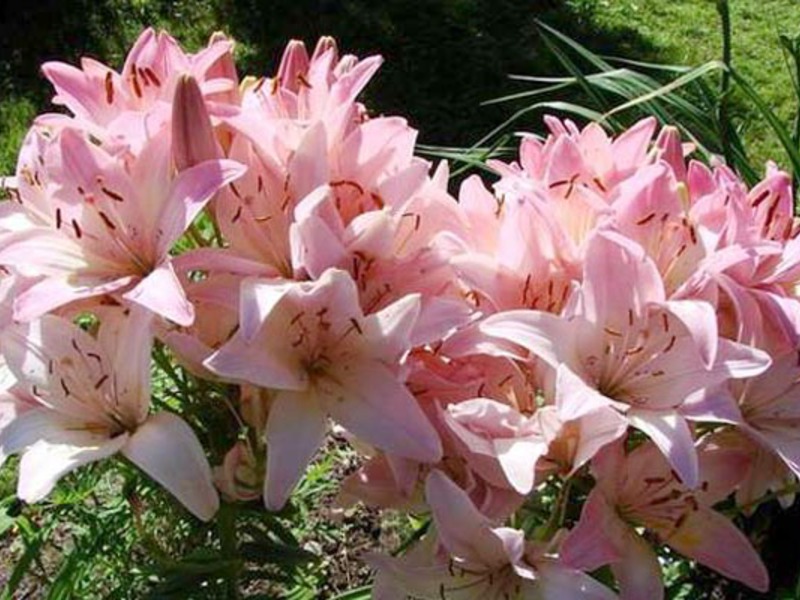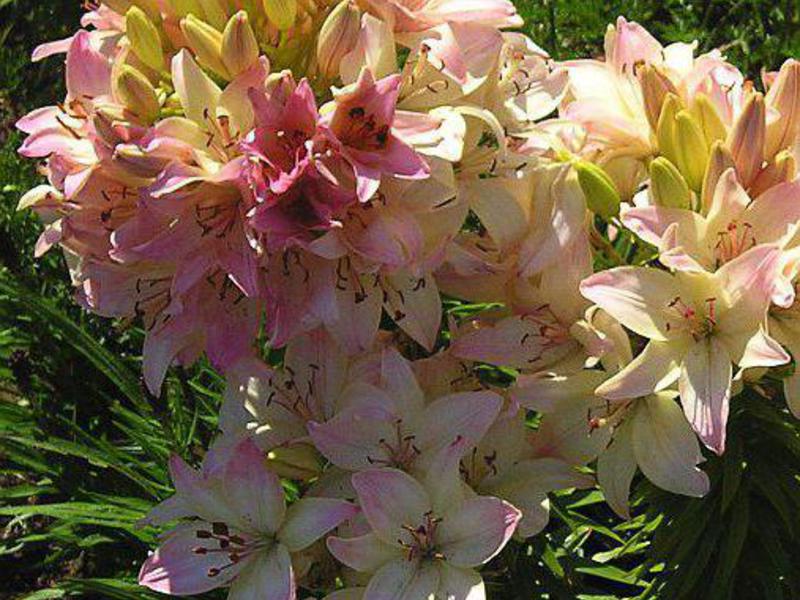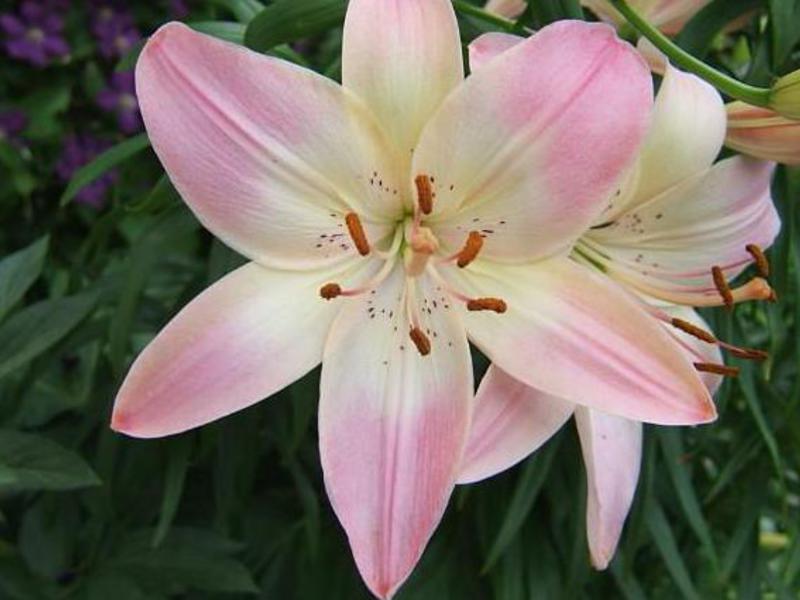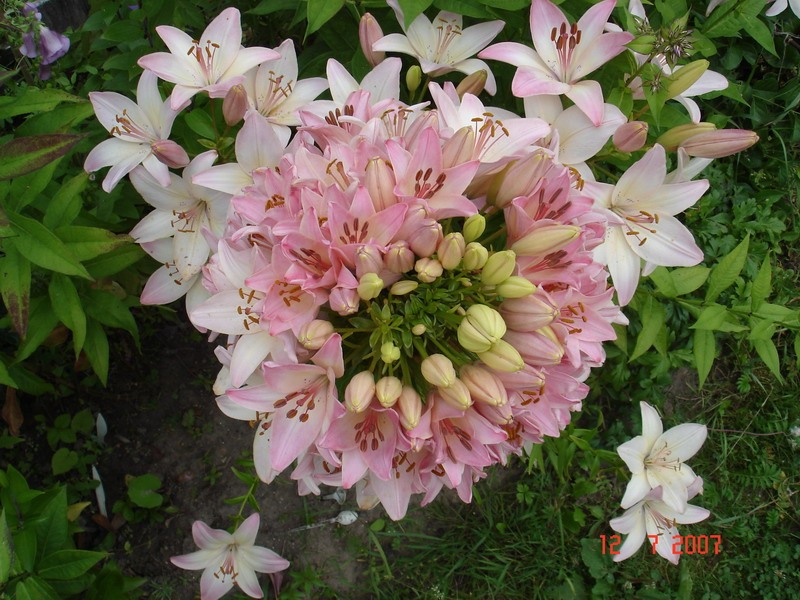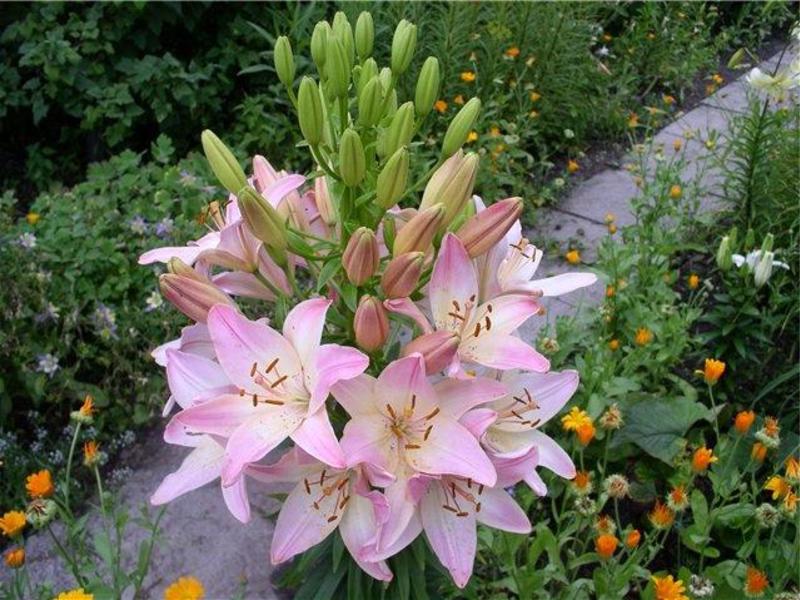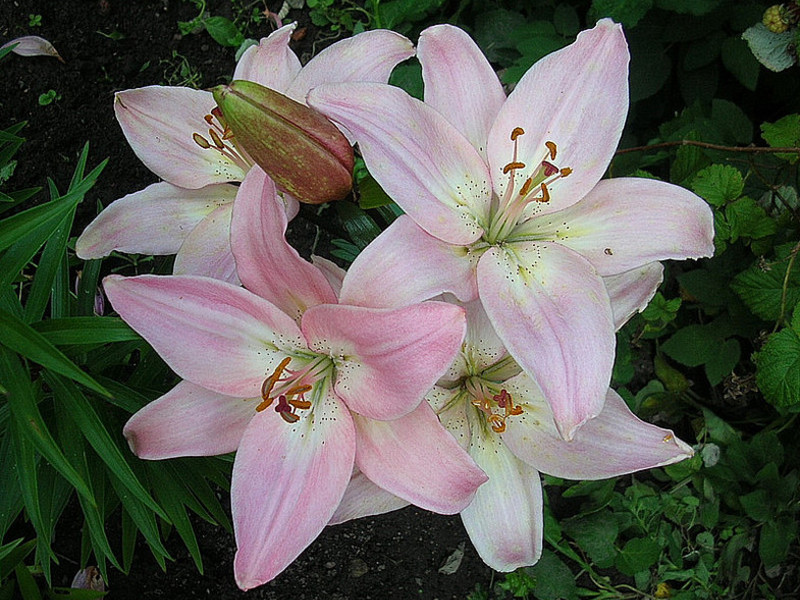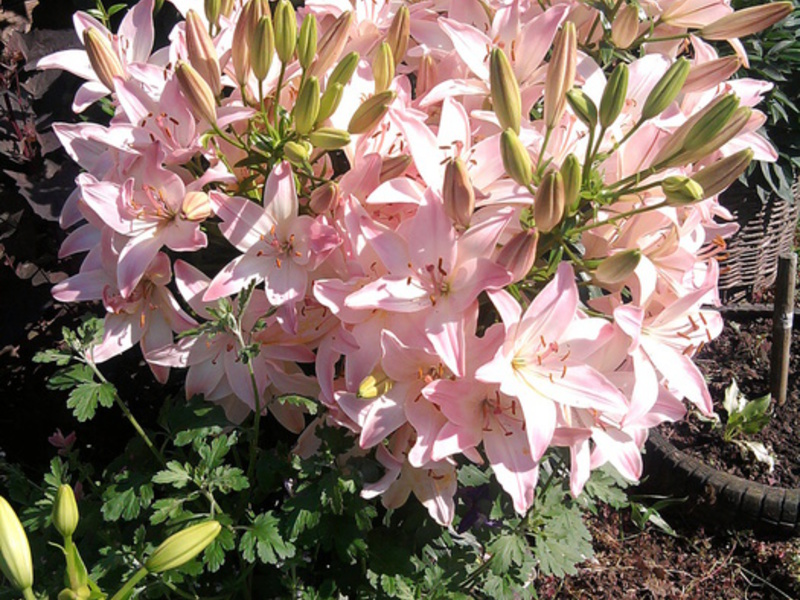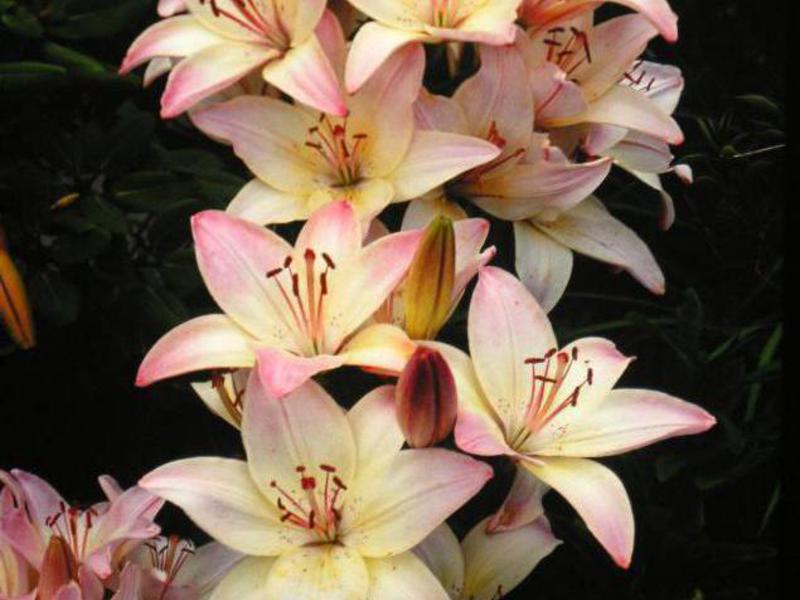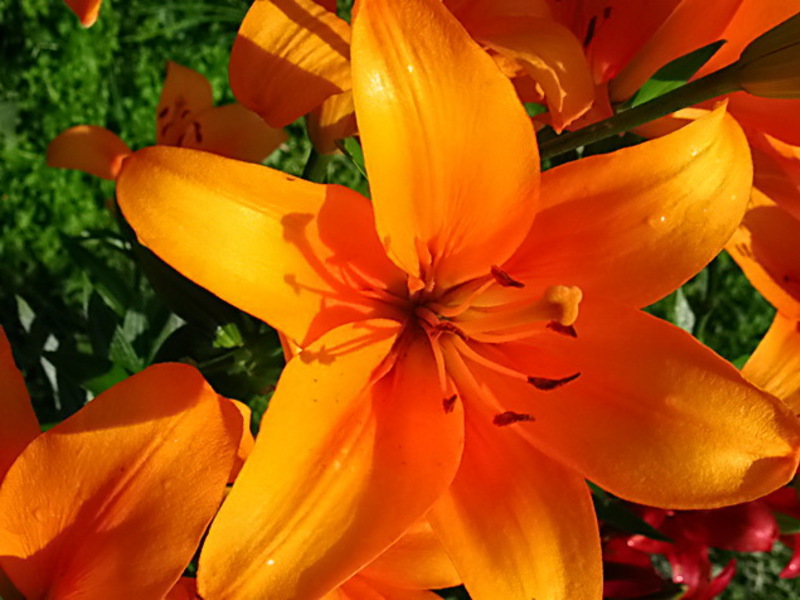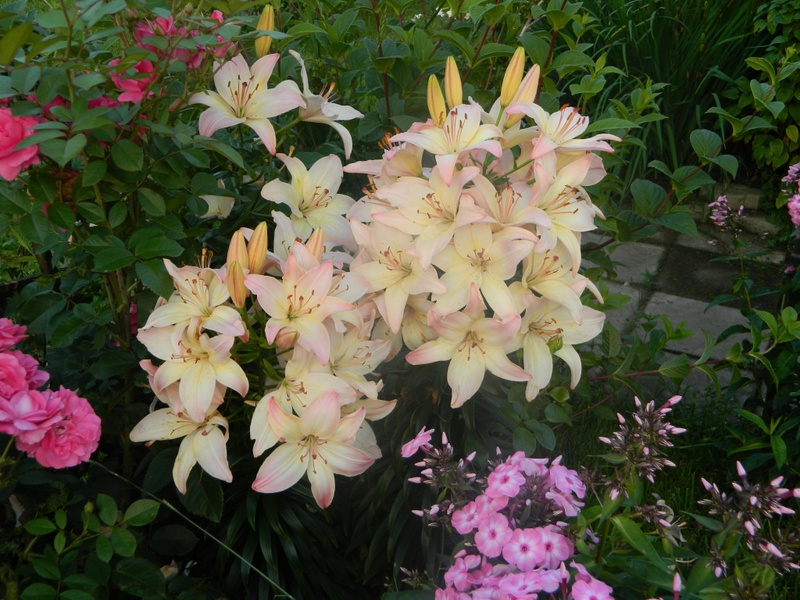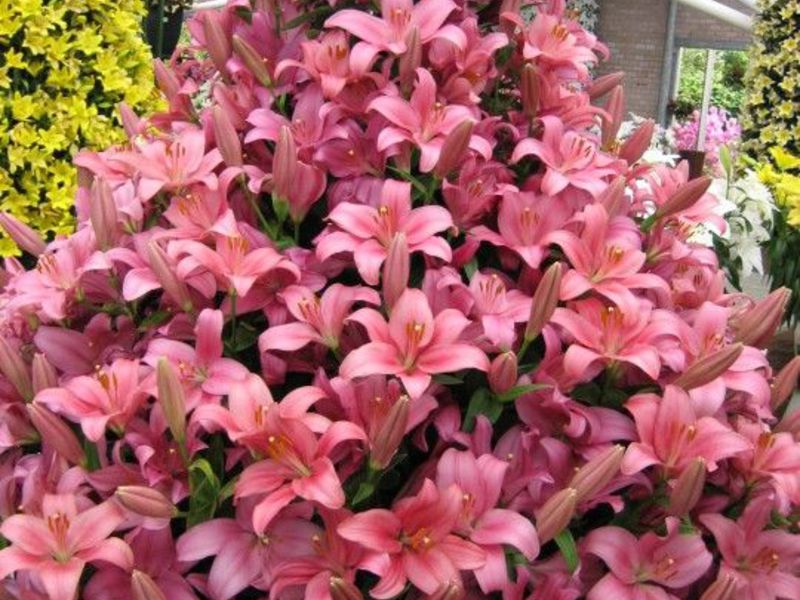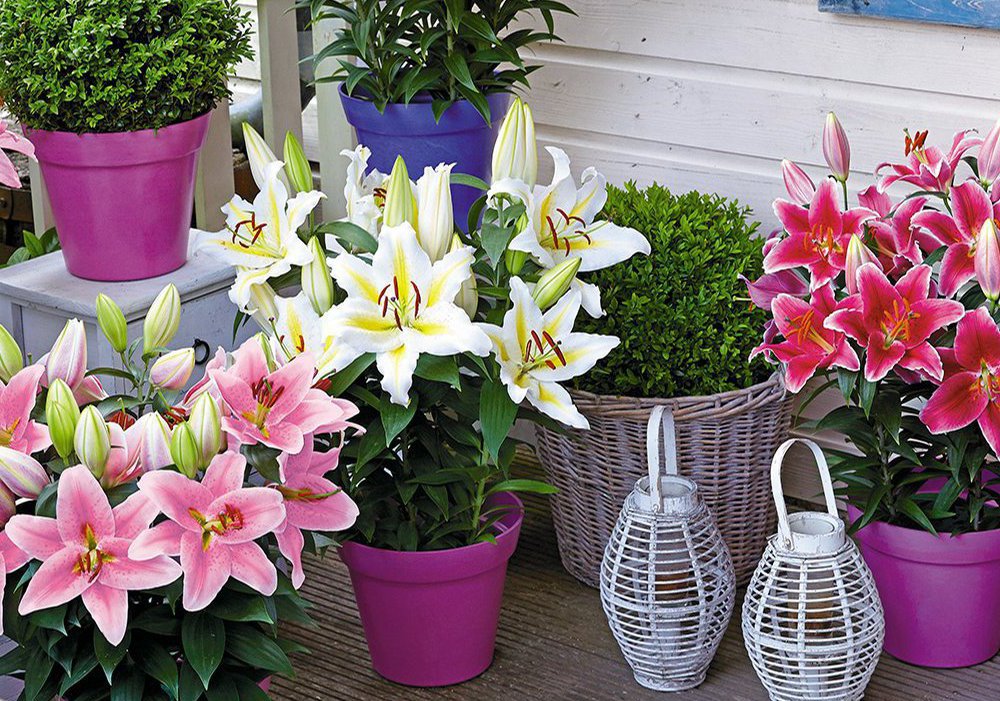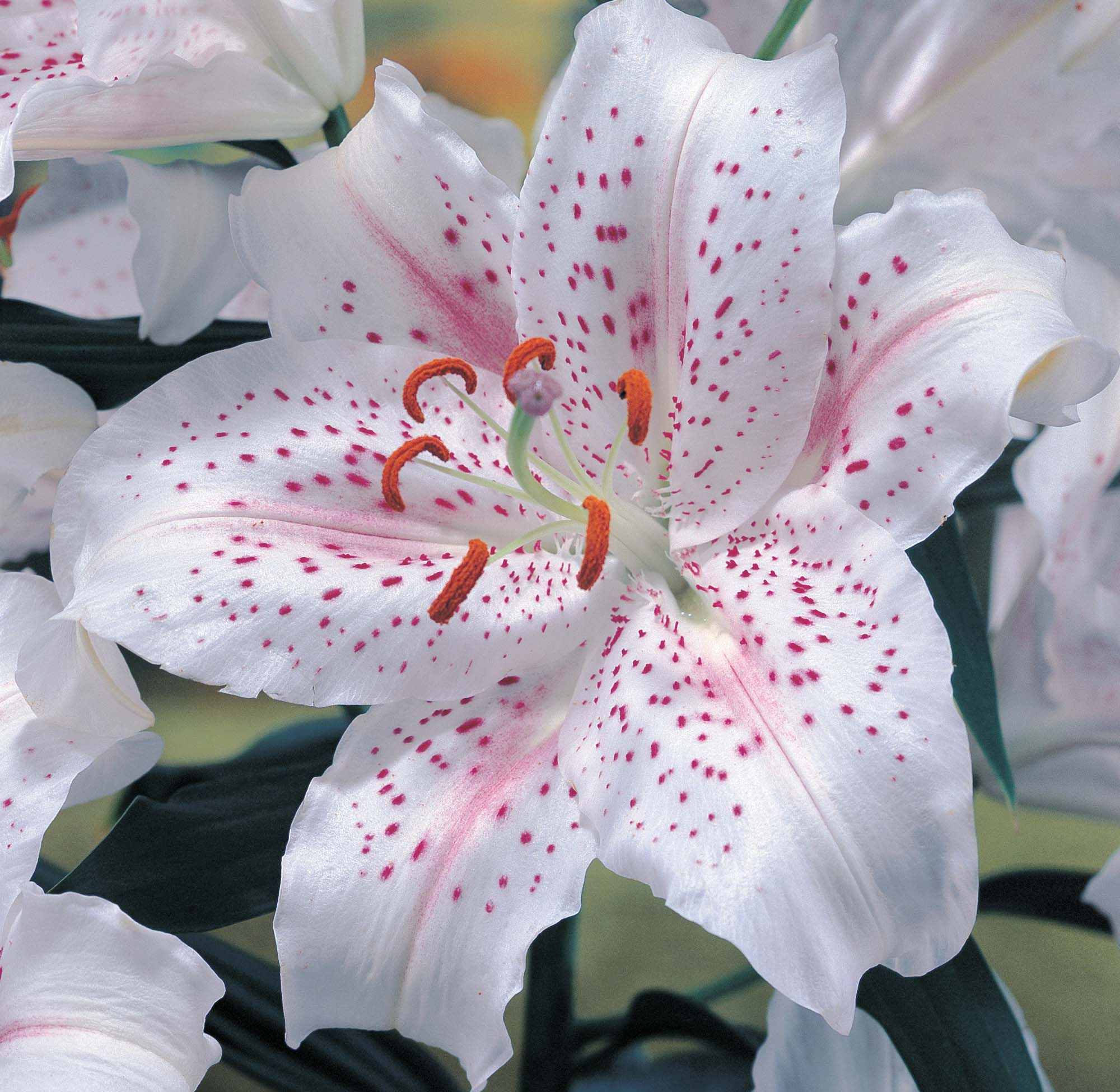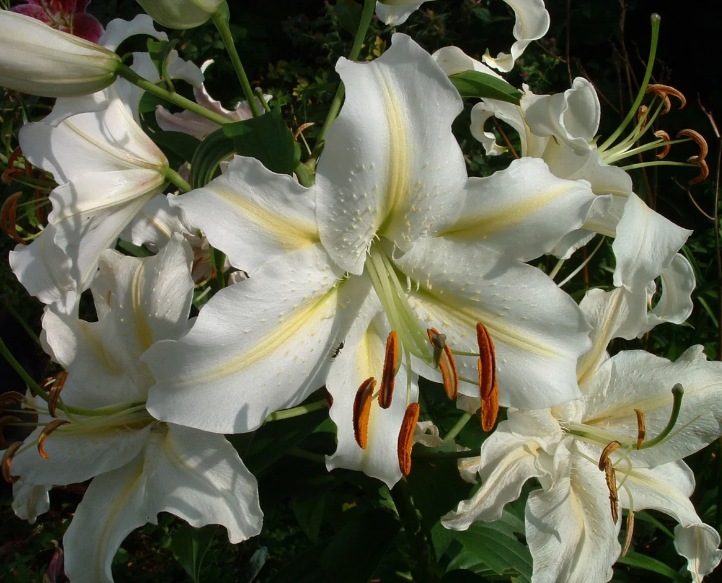Currently, the number of different varieties of lilies is impressive. Breeders do not stop there and continue to develop new hybrid varieties with atypical properties for lilies. For example, the Marlene lily is striking in its ability to produce up to 100 flowers per stem. It has a fantastic appearance during its flowering period, which has been facilitated by nature.
Lily Marlene combines the qualities of both the Asian group of lilies and the longiflorum lilies. From the Asian group, this flower received:
- ability to withstand cold;
- early flowering;
- the ability to form a large number of shoots;
- ease of rooting.
Asiatic lilies are very strong and easy to care for, so they are often used as a base for new varieties.
Description
Marlene stems are pale green and colored and can reach a height of 90-100 cm... The leaves, which are pointed and elongated, grow alternately. On average, they are 13x1.5 cm in size. Large flowers reach 15-20 cm in diameter. The tips of the petals are delicate pink, and towards the center they change their color to almost white.
In a temperate climate zone, after the first shoots appear from the ground, the lily begins to bloom after 75-80 days.
Features of Marlene
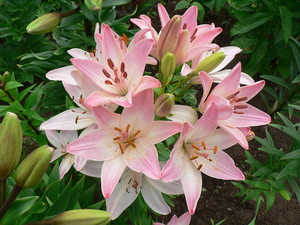 Thanks to the mutation, with the help of which it is possible to combine several stems into one, this flower variety can have such an unusual appearance. Even during the inception of a flower, a mutation occurs and therefore an already accreted, massive, thick stem appears above the surface of the earth, on which buds are then formed for a large number of flowers.
Thanks to the mutation, with the help of which it is possible to combine several stems into one, this flower variety can have such an unusual appearance. Even during the inception of a flower, a mutation occurs and therefore an already accreted, massive, thick stem appears above the surface of the earth, on which buds are then formed for a large number of flowers.
One of the attractions of Marlene, which will really appeal to those who do not like the thick smell of lilies, is just her lack of any smell.
Lily Marlene is ideal for arranging bouquets. In addition, it is able to keep its fresh appearance in water for a very long time.
The multicoloredness of the plant, unfortunately, can only appear for 2 or 3 years, after the bulb is separated from the mother flower. Sometimes the mutation may not occur at all or it will be weakly expressed. And, of course, a large bouquet on one stem will not work. This situation can arise due to unfavorable soil for the plant or conditions that are not suitable for it. If at least a few dozen buds appear on the lily, this will already speak of the Marlene variety.
Landing
The most suitable period for planting a flower in open ground is mid spring or early May... Bulbs for planting can be purchased in autumn, but then, in order to avoid awakening and the formation of young shoots, it is better to place the bulbs in a cool place. You can even leave them in the refrigerator.
The size of the bulb itself determines the depth at which it should be planted. Large ones are planted a maximum of 20 cm deep, but young ones can be immersed in the ground to a depth of 10 cm.
If the soil is clayey, then it will be necessary to add to it:
- Peat;
- Sand;
- Humus.
But such concentrated fertilizer as fresh manure can completely destroy the bulbs.
The place where the Marlene lily will grow should be well lit by the sun and protected from drafts and wind. Harsh wind and shade can cause the buds to fall off and completely weaken the flower.
Caring for Marlene
 This lily variety, like Asian varieties, is very resistant to adverse conditions... In personal care, Marlene does not require more special care than all other varieties. The soil in which the flower grows must be periodically loosened and regularly watered, as well as top dressing with complex fertilizers.
This lily variety, like Asian varieties, is very resistant to adverse conditions... In personal care, Marlene does not require more special care than all other varieties. The soil in which the flower grows must be periodically loosened and regularly watered, as well as top dressing with complex fertilizers.
There are several types of food for the Marlene species. It is necessary to fill the soil with nitrogen-containing fertilizers during the period of active plant growth. Complex fertilizers will be needed when buds begin to form and grow. Phosphorus and potassium are needed to strengthen the bulb after the plant has finished blooming.
In early October, it will be fashionable to stop watering the flower and remove dry stem... Cover the remaining part of the lily above the ground with foil, in which leave a small hole for ventilation. So she can stay until the first frost. The film will help the soil stay dry until the first cold weather sets in, because wet soil in frost can destroy the plant. You can cover the flower with peat and sluggish leaves in order for it to overwinter. Such a layer of 10 cm will help to reliably protect the lily.
Reproduction
The lily bulb must be repotted every three to four years. The most suitable time for this is autumn, when the flower will "go to sleep". At the same time, you can separate young bulbs, which will already be formed, from the mother. It is better to plant such bulbs shallow. In most cases, such a bulb does not bloom in the first year, but it gains strength and becomes stronger. During this period, a young plant requires careful care, as well as when germinating this variety from scales.
